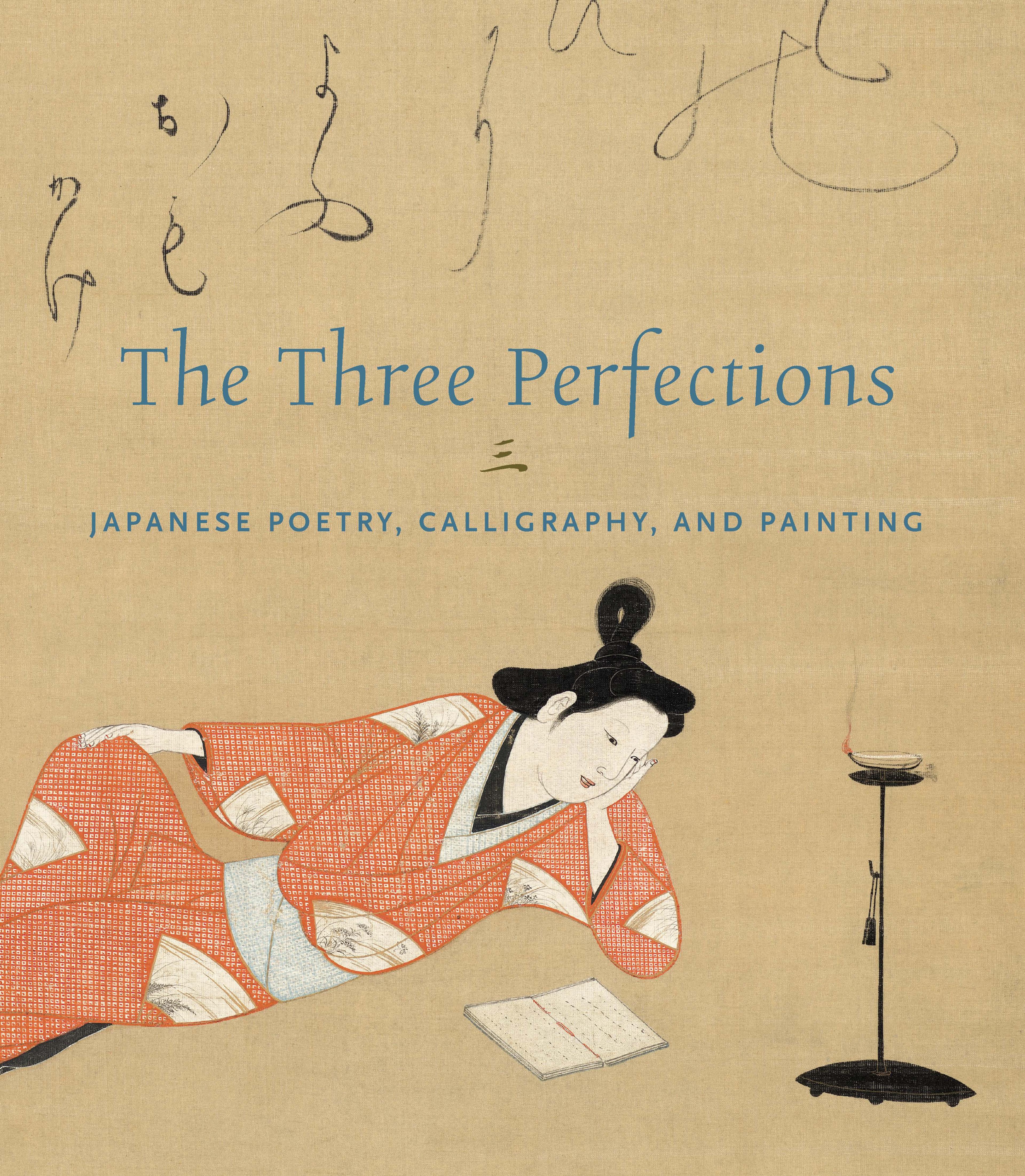Album of Japanese and Chinese Poems to Sing
Konoe Nobutada, a courtier-calligrapher famed for his bold, expressive, and idiosyncratic handwriting, inscribed the decorated poetry sheets (shikishi) for an album comprising selections from Japanese and Chinese Poems to Sing, compiled about 1013 by the courtier-poet Fujiwara no Kintō (966–1041). This was surely one of the most widely studied and cited poetry anthologies available around the time Murasaki Shikibu was crafting her complex tale, which is interwoven with 795 waka (thirty-one-syllable verses) and countless allusions to Chinese poems.
Japanese and Chinese Poems to Sing is composed of 588 Chinese couplets and 216 accompanying waka, interspersed with each other as if to draw out resonances in poetic imagery and style.
Japanese and Chinese Poems to Sing is composed of 588 Chinese couplets and 216 accompanying waka, interspersed with each other as if to draw out resonances in poetic imagery and style.
Artwork Details
- 近衛信尹書 『和漢朗詠集』 色紙帖
- Title:Album of Japanese and Chinese Poems to Sing
- Artist:Calligraphy by Konoe Nobutada (Japanese, 1565–1614)
- Period:Momoyama period (1573–1615)
- Date:early 17th century
- Culture:Japan
- Medium:Album of thirty-six leaves; each on gold, silver, or colored decorated paper
- Dimensions:Each: 8 3/4 × 10 1/2 in. (22.2 × 26.7 cm)
Open: 21 in. (53.3 cm) - Classification:Calligraphy
- Credit Line:Mary and Cheney Cowles Collection, Gift of Mary and Cheney Cowles, 2018
- Object Number:2018.853.38
- Curatorial Department: Asian Art
More Artwork
Research Resources
The Met provides unparalleled resources for research and welcomes an international community of students and scholars. The Met's Open Access API is where creators and researchers can connect to the The Met collection. Open Access data and public domain images are available for unrestricted commercial and noncommercial use without permission or fee.
To request images under copyright and other restrictions, please use this Image Request form.
Feedback
We continue to research and examine historical and cultural context for objects in The Met collection. If you have comments or questions about this object record, please contact us using the form below. The Museum looks forward to receiving your comments.
